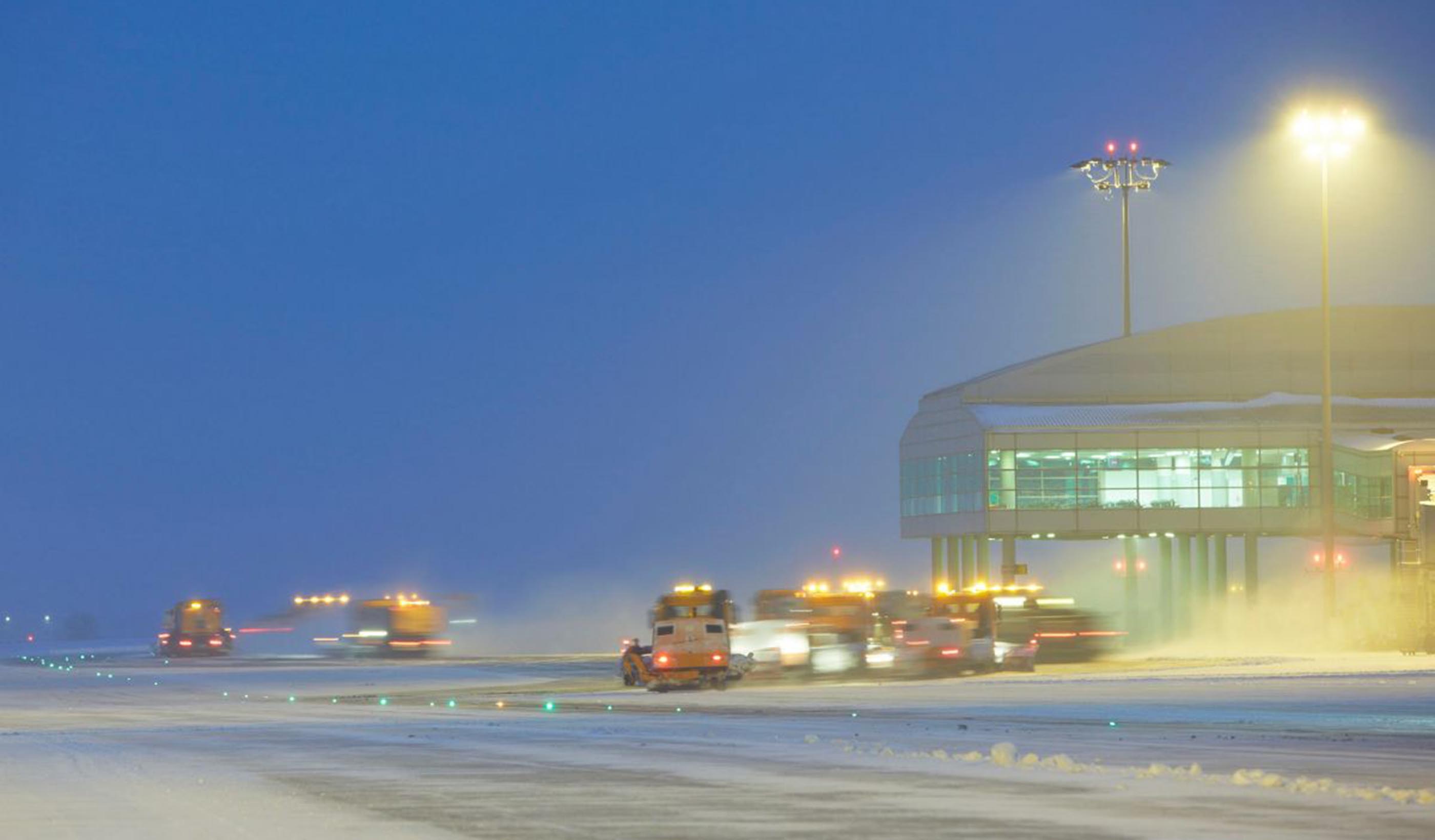4 key steps toward a resilient airport
May 12, 2016
May 12, 2016
Extreme weather causes 70% of airport delays. These tips from the Transportation Research Board can help your airport be better prepared
At Toronto Pearson, the ice storm. At LaGuardia, flooding. Airports impacted by extreme weather events are on the rise. Rain storms can flood runways and overwhelm stormwater systems. Heat waves can damage runways and aircraft tires. Winter storms increase snow removal requirements. Thousands of passengers are left stranded—70% of airport delays are caused by extreme weather—and the economic impact to airports can be in the billions. And all of these weather events impact passenger, worker, and community safety.
Now more than ever, airports need to plan for the worst, but it’s challenging to know what the worst can be. In addition, airports need to balance safety, operations, and financial constraints when deciding how—and how much—to invest in climate change adaptation.
Fortunately, in 2012, the Transportation Research Board (TRB) released the Airport Cooperative Research Program (ACRP) Synthesis 33: Airport Climate Adaptation and Resilience, sponsored by the U.S. Federal Aviation Administration. The TRB also provides an online webinar on the topic for airport planning and design professionals.

The Climate Change Adaptation Planning Process
The TRB's Climate Change Adaptation Planning Process provides a useful overview of how airports can understand and plan for the range of climate risks to their facilities and operations. Here’s a summary of the three-phased approach, taken from the webinar:
1. Initiate the Adaptation Planning Process
2. Develop an Adaptation Plan
3. Refine and Monitor
And here are my four key takeaways from that process.
1. Know your risks—now and in the future
To prepare appropriate actions to mitigate the impacts of extreme weather events and enhance an airport’s resilience, airport designers should conduct a thorough risk analysis. That includes thoroughly reviewing all historic climate sources (data, studies, case studies, etc.) and understanding current weather patterns.
But this is not a one-time event. Given the rapid change in climate patterns we are experiencing, it’s critical to update and refine your risk analysis by staying on top of new climate models as they are developed.
The webinar introduces ACROS—the Airport Climate Risk Operational Screening Tool—to help airports understand their climate change-related risks and vulnerabilities. You can find the tool here.
2. Engage everyone
Like everyone, airports have limited resources. Therefore, airports can’t implement every single climate adaptation strategy. So to determine the most important strategies, talk to your stakeholders. All of them. The webinar provides a list to get you started. Engaging all key stakeholders and members of the project team also contributes to LEED®’s integrated design process, with the goals to deliver sustainable projects.
3. “Mainstream” strategies
You can create a stand-alone climate adaptation plan, but I think it’s better to embed adaptation strategies into existing airport programs—what the webinar calls “mainstreaming.” Safety management systems, master plans, transportation planning frameworks, business continuity plans, and more can all be made stronger by addressing possible impacts of climate change. And I think you will get better stakeholder buy-in if the plan is spread out, owned by everyone, and addressed by the various airport standards and guidelines.
4. Remember, it’s a process, not an event
Toronto Pearson added a standalone power plant, known as the Central Utility Plant, about a decade ago so the airport would be resilient to regional power failures. But even though the lights stayed on during the 2013 ice storm, you can bet Pearson “refined and monitored” their resilience efforts based on lessons learned from the storm.